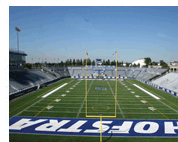A Young Athlete Who Aims HighFeb 14, 2014Posted by james
When Ming Davis was young, his parents placed him in a soccer program. He didn’t like it, but their reasoning made perfect sense. Their new son, adopted from China, was born with a birth defect. He didn’t have a left arm. Soccer, of course, did not require hands.
Ironically, as he began to play, Ming wanted to become a goalie. The goalie is the only player permitted to use hands to handle the ball. Ming was not going to be deterred. He became a goalie.
Now, at 14, Ming can do just about anything he chooses, and some things he does very well. He has medaled when he hurls the javelin and he also participates in the shot put and runs track.
His handicap is not the missing arm. The handicap was eight years in a Chinese orphanage along with emotional and physical neglect.
Ming was in the orphanage with two older brothers. They often escaped, with Ming living under a bridge. He learned to panhandle, drink, smoke, cheat at cards and steal. His early years taught him to fight for every advantage and to overcome every obstacle.
Today, Ming is the acknowledged leader of every youth team on which he participates. He competes hard, but he also works harder during practice than his teammates. He cheers his teammates’ successes with infectious enthusiasm. He also helps coach younger players.
“Sometimes I just think other kids are one step ahead of me,” Ming stated in a newspaper article, “so I have to work twice as hard. I just want to push myself to be the best I can be. I never knew I would be an athlete. I was always the smallest kid. One thing I don’t want to do is give up. I want to keep my grades up so I have a great future. Sports is secondary. Sports is something you do for fun.”
I am not surprised to hear about Ming’s many accomplishments and I know he will have many more in sports and in life. He just knows how to overcome any obstacle.
Jim









